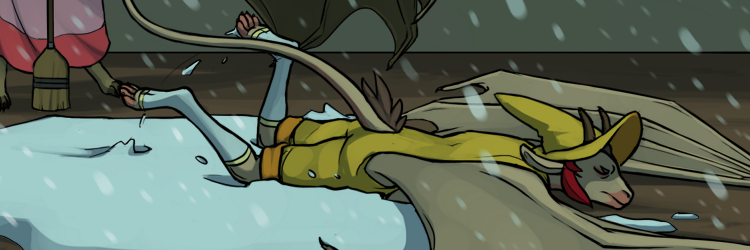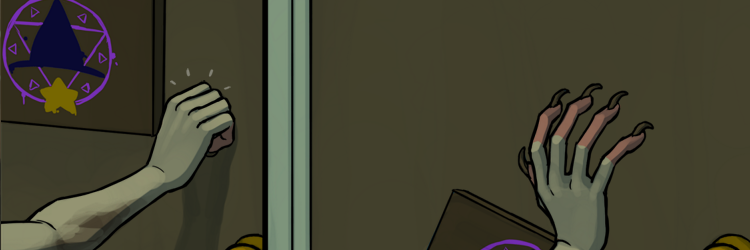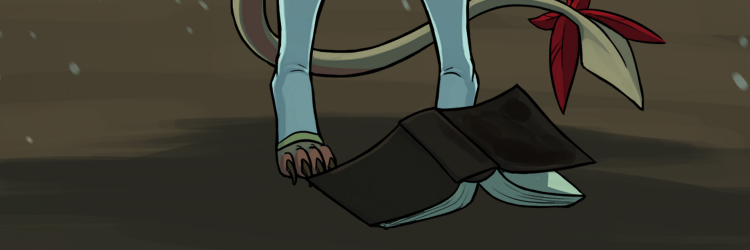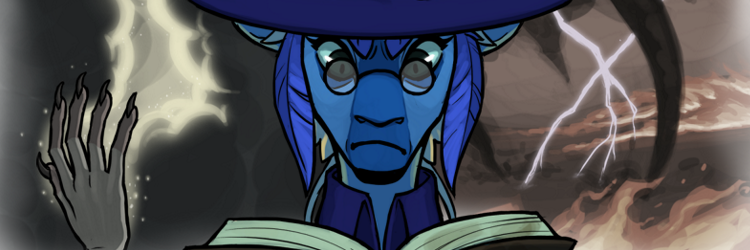Lessons Learned: clarity in comics without dialogue
posted on Jan 17, 2017 by Meg James
Summer Hill was, first and foremost, an experiment in silent comics. It wasn’t my first comic without dialogue (that was the unfortunately-rushed 12-page Water Witch, which isn’t associated with Azdion), but I was still fairly new to working with this idea. The biggest challenge, therefore, was making everything clear without having the characters talk.
Telling by showing
See, dialogue is excellent for making it obvious how characters feel, and I decided not to give myself that benefit. Still, lot of things can be accomplished through context and actions:

Arenna slips and falls in the snow.

Arenna knocks a sign off a door.

Arenna has dropped her book.
Some things, like the fact that Arenna is clumsy, are very obvious. Arenna doesn’t need to say anything to get this across (and, given her clumsiness, I’m not even sure if words would come out of her mouth the right way to say it).
Showing… what, though?
But how clear was it that she was going to the Wizard for tutoring? This aspect of the story confused a few readers. The sign on the Wizard’s door indicates that he is a wizard, and one might even be able to tell when Arenna holds up the book that she is asking for something. However, it’s not really specified if she’s asking him for tutoring, clarification, or for him to cast the weather spells himself. It is only suggested that Arenna herself is interested in the spellwork when the Wizard imagines her casting a disastrous weather spell. Even the intent of this panel wasn’t totally obvious to all readers, however.

The Wizard considers the risks of letting Arenna practice weather magic – but how can you see that?
Regardless, the story progresses after Arenna gets a door slammed in her face, and it’s fairly direct thereafter. She sits back on her bench, is greeted by her girlfriend Susanne, and the two trek out of town and up to the hills where Arenna can practice dangerous magic in relative peace.
It makes sense to you, but that doesn’t mean it’s obvious
Clarity of action is something that should be considered in any comic, but especially one without dialogue or narration. As always, scripting and thumbnailing a comic are good ways to help plan, and they’re easy to redo if need be. While I reviewed my thumbnails for pacing, I failed to take into account how ambiguous actions could be seen differently. Careful reading at early stages of a comic help bypass a lot of problems like this. It might not even hurt to have some outsiders review your thumbnails to see how other people might read the action.
Regardless, it’s good to experiment with new storytelling methods! While certain styles of comic won’t be good fits for certain stories, there’s nothing wrong with playing around and trying new things. Short comics, in particular, are an excellent medium for practicing different ideas.
If you’re thinking about trying a silent comic, I hope this post was of some help. And if you already have one, or you’re working on one, please share with us by emailing me*******@az****.com. We’d love to see what you’re up to.
You must be a member to post comments.